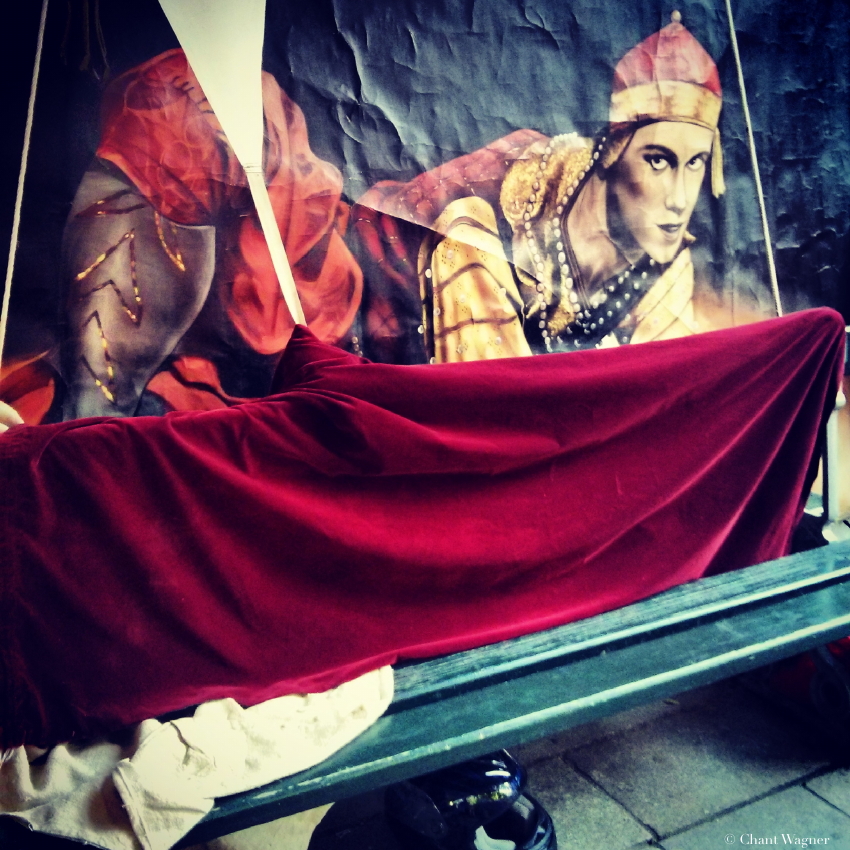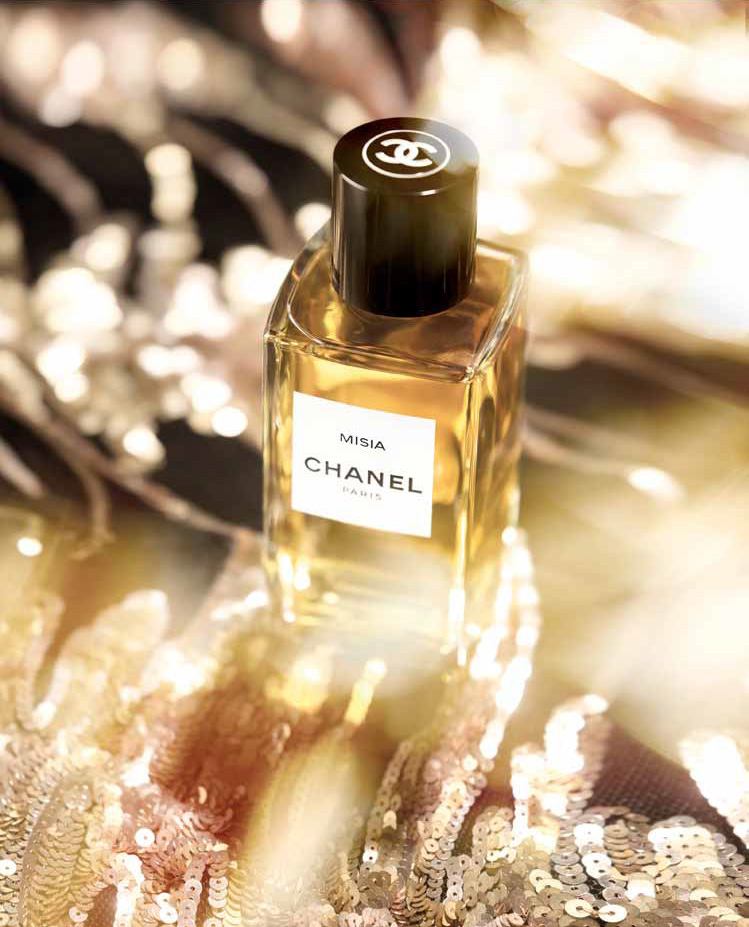Chanel Misia (2015) - Chanel's Russians {Perfume Review & Musings}

Nijinsky © Chant Wagner
Misia in the Les Exclusifs collection by Chanel is the latest creation by the fashion house for its exclusive range of scents, which is admittedly inspired more by style than fashion. For a monument of sartorial history famous for the dictum of its founder that style remains when fashion evaporates, you might muse and wonder what the house creates: style or fashion? They do fashion shows, like all the other houses, yet they also recreate a style which is made permanent through its constant reenactment on the podiums, but even more unbelieavably on the streets and in the subway. You, going about your business of the day can pause anytime for a moment of cognitive clicking when you spot someone wearing an outfit which is not Chanel but inspired by the style of Chanel: casual stripes or galon, loosely cinched waists, structured shoulders, a certain sense of slightly slouchy, nonchalant yet brainy elegance, line above form, those are the traits of that style...
The perfume Misia is named after the historical figure of Misia Sert née Godebska whose name trails in nearly all the accounts of artistic Paris at the end of the 19th century. Her gentle nickname you hear for the first time as being that of a subject of painters such as Renoir, Bonnard, Toulouse Lautrec, Vuillard, to cite just a few. In reality, it turns out that she was not just a subject but an actress of her time. She inspired, financed and was known for her discerning nose and taste for geniuses. Coco Chanel was one of them in a world dominated by a masculine distorting lens put on the definition of the word genius.
Smelling the perfume, you have to realize after some time that Misia is evoked only indirectly as a link with the atmosphere of the Ballets Russes and Gabrielle Chanel. The composition is really more about a moment of sharing the feverishness of that atmosphere rather than about, say, the noted Slavic charm of Misia who was of Polish origin. Perfumer Olivier Polge explained in the press communiqué that,
"My inspiration for this fragrance wasn't Misia herself as a person, but her role as a turning point in the life of Gabrielle Chanel. With this fragrance, I wanted to convey the atmosphere of the Ballets Russes and the smell of makeup from that time."
« Mon inspiration pour ce parfum n'était pas Misia elle-même en tant que personne, mais le tournant qu'elle représente dans la vie de Gabrielle Chanel. » « À travers ce parfum, j'ai voulu illustrer l'atmosphère des Ballets Russes et les odeurs de fards de l'époque. »
In more concrete terms, Misia edp is the Chanel interpretation of a lipstick accord in perfumery. It is a particularly qualitative one in this case while being also evocative of a time and place. This is not a deconstructed lipstick fragrance - you will smell it as if you were applying it right under your nose, but it is one which was delicately upset, like you can elegantly tease your hair to make it fall out of line a bit.

The fragrance opens on an absolutely delicious, delightful, and ever so pretty combination of rose and violet notes, with an inviting fruitiness emanating from the rose. The precious Rose of May was used, to which Chanel have a notoriously privileged access, together with Turkish rose. A rush of bergamot confirms the delight calling to mind the uplifting and gay effect it has on you in Shalimar by Guerlain. Then, the warm notes of Laotian benzoin and iris add a soft, sueded feel.
Where the composition could be better controlled it seems is in how fast the base comes to be into play. It feels a bit brusque and rushed. On the other hand, it reveals itself to be a very long and layered drydown with new nuances appearing overtime.
While a composition inspired by the atmospheric scents of makeup could be wholly harmonious, a little edginess was thrown in with the rather green and raw violet displaying its vegetaly nuances almost as if it were a lettuce salad.
As the composition mellows down, the almondy tonka bean, iris and benzoin smell appealingly exotic and oriental as if you were inhaling the aroma of an unknown dessert from a far distant land. The blend is subtly spicy and musky, woody, vanillic and lightly leathery. Since we've been invited to watch the Ballet Russes, let's imagine the supple lipstick red leather boots worn by dancers.
The base reveals better the iris with a gourmand, lickin' good dose of tonka note.
The ever deepening base transforms itself into a milky almond bath you could drink or bathe in alternatively. At times, you catch glimpses of floating green irises on the white milky background. It is odd - and again, edgy. It brings together a strain of inspiration combining the violets of Balenciaga Paris with the iris of Dior Homme - both creations by Olivier Polge - but also reveals this wish to show that Les Exclusifs offer a different style of writing from the mainstream offerings from the house in a space where more creative freedom and luxury can be experimented.
The rice powder seems to turn into a much more edible riz au lait at times. The iris smells doughy and dewy at the same time, made fruity by a lick of raspberry jam. The woody facet of the makeup accord seems to turn into the scent of papyrus and blond straw. Deep within the perfume, there is again like a leitmotiv, this delightfully elegant scent which is in general the signature scent of Chanel. If the house smells of anything constantly, it is of elegance. They have mastered the effect. They may use any sauce in the recipe, it will smell utimately like elegance personified.
Therein lies the secret to a Chanel perfume. It is not just the story of a perfume base travelling through the centuries like at Guerlain's. Here, it is about the constant manufacturing of a line, a style, a sense of restraint, an economy of means which gives yet does not give all. It is a about a constant effect of tension, as we noted for example for a separate yet just as interesting perfume Avon Bond Girl 007 about which we wrote that there is "The technical tour de force of this perfume is that this tension never subsides.."
Polge made the decision of associating Coco with Misia by adding the sparkling amber of Chanel No.5 in the composition. The olfactory signature of the No.5 is reproduced discreetly. It is the scent of Mademoiselle Chanel visiting backstage at the Ballets Russes.
The longer drydown is all powder, lipstick and blush while the night-to-morn drydown smells uncannily of not just all those floating scents whirling about invisibly in the overheated atmosphere of the behind-the-scenes at Palais Garnier, but becomes the exact scent of a stick of lipstick, what is called in French the "raisin". You can even smell the fat in it.
Finally, it all becomes true,
"Picture the exciting atmosphere at the Opéra Garnier in the years when the Ballets Russes took over the stage. The clicking of pearl necklaces and aigrette hair ornaments melded with the scent of red-tinted lips. The musicians tuned their instruments, while the dancers - wearing makeup from head to toe - warmed up behind the red velvet curtain."
You are transported back to a time when the No.5 smelled exotic and very 1920s. It even smelled Russian and Fauve, i.e. bold and bright.
The creation of No.5, we must not forget, was nurtured by all that you can love and fear in Mother Russia: its sense of excessive partying - they played the roulette russe - fête, luxury - go to the Winter Palace or Tsarskoye Selo and tell us what you think - but also its infinite and silent landscape of snow and birch trees. The No.5 smells of the aldehydes of the great north where there are no flowers, we know that.
By looking at the Ballets Russes' beauty rituals, Olivier Polge has gone once more to the Russian origins of the house perfumery, revisited it. He's also paid homage for his first official perfume for the house to Ernest Beaux, the creator of the No.5 who hailed from Russia. He's added a new layer of cultural history to No. 5 which now is made to float again in the air during a visit to Diaghilev, Nijinsky and the troup of ballet dancers, thanks to the great facilitator and muse that was Misia, whose Slavic soul is like a bridge to those farther outreaches of Europe.









